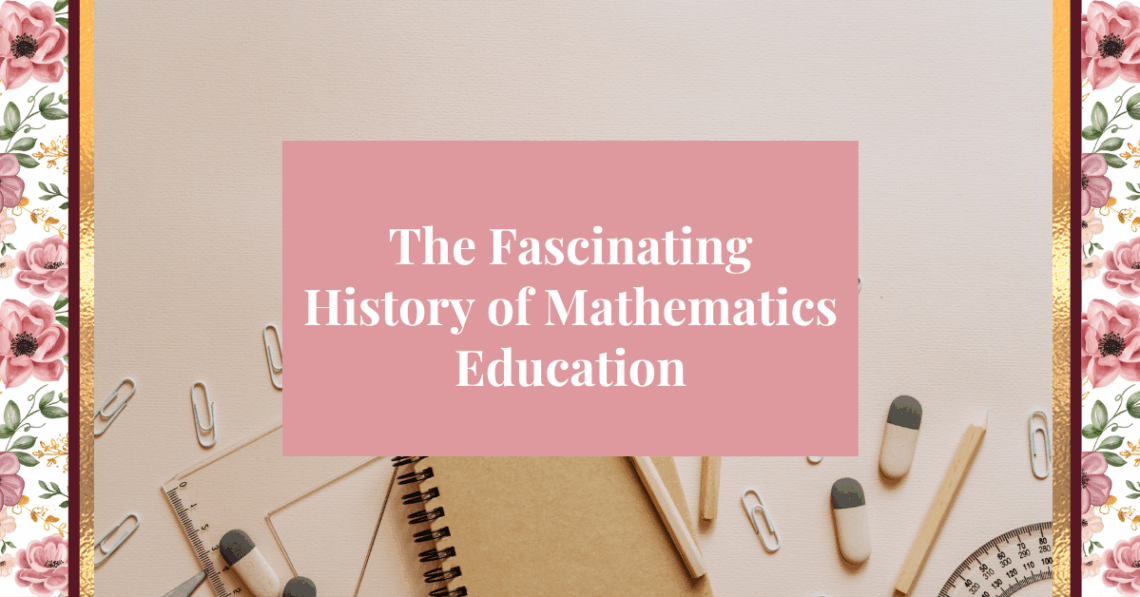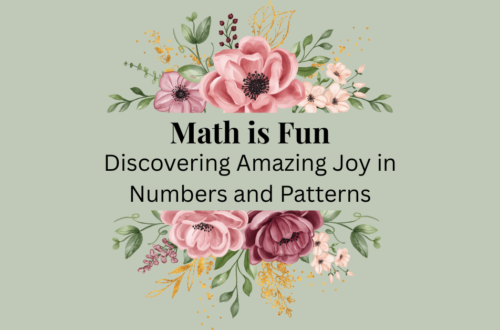Mathematics education is an essential part of our academic lives, shaping how we approach problem-solving, logical thinking, and even creativity. But have you ever wondered how math education evolved? From the ancient world to modern classrooms, mathematics education has undergone significant transformations. In this post, we’ll explore the fascinating history of math education, from its humble beginnings in ancient civilizations to its role in today’s digital world.
1. Ancient Civilizations: The Foundation of Mathematical Education
The history of mathematics education can be traced back to ancient civilizations, where the basics of arithmetic, geometry, and algebra were taught in practical ways. For early societies, mathematics was essential for trade, land measurement, and construction, and thus, education was directly tied to these needs.
- Sumerians and Egyptians (c. 3000 BCE): The Sumerians and Egyptians developed systems of counting, measurement, and simple geometry to assist with trade, building structures, and agriculture. Education was informal but highly practical, often passed down through apprenticeships or through temple-based schools.
- Babylonians and Greeks (c. 1900 BCE–400 CE): The Babylonians used advanced arithmetic and algebraic methods for trade and astronomy. The Greeks, with scholars like Pythagoras and Euclid, formalized mathematical education, teaching not only arithmetic but also abstract concepts in geometry and logic. In Greece, the concept of mathematical education was elevated to an intellectual pursuit, influencing future generations.
- India and China (c. 500 BCE–1000 CE): Both Indian and Chinese cultures made significant contributions to mathematical education. Indian mathematicians, such as Brahmagupta, developed concepts such as zero and algebra, which were later incorporated into European curricula. In China, the concept of calculating through the abacus became central to their education system, and this method spread to other cultures.
2. Medieval & Renaissance Periods: The Transition to Formal Education
As the Western world entered the Middle Ages, much of the mathematical knowledge from the ancient world was preserved and taught by Islamic scholars. During the Renaissance, mathematical education began to evolve into a more formal system.
- Islamic Golden Age (c. 750–1250 CE): Scholars in the Islamic world played a key role in preserving ancient Greek and Roman mathematical knowledge and expanding upon it. Institutions like the House of Wisdom in Baghdad became centers of learning, and scholars like al-Khwarizmi developed algebra, which became an essential part of the curriculum in the West.
- The Renaissance (14th–17th century): With the rediscovery of classical texts and the advent of printing, mathematics education in Europe began to flourish. Scholars like Galileo, Descartes, and Newton developed new methods of teaching, often focused on observation and experimentation. Mathematics became an essential tool for understanding the physical world, and schools began incorporating it into their curricula.
3. The Enlightenment: The Rise of Modern Mathematical Education
The Enlightenment period marked a major shift in how mathematics was viewed and taught. As Europe moved towards a more scientific worldview, education in mathematics became more formalized and structured, setting the stage for the modern educational system we know today.
- The Birth of Public Education (18th century): As the Industrial Revolution grew, the need for formal education became evident. In Europe and America, the rise of public education systems brought mathematics into schools in a more structured way. In France, figures like Condorcet pushed for educational reform, emphasizing the importance of mathematics as a foundation for other subjects.
- Mathematics in the Curriculum (19th century): By the 19th century, mathematical education had become standardized in many Western countries. Schools began offering subjects like arithmetic, algebra, and geometry as part of their basic curricula, and textbooks were developed to help guide both teachers and students.
4. The 20th Century: New Methods & International Influence
The 20th century saw incredible advancements in both the methodology and the accessibility of mathematics education. With the rise of new teaching techniques and the integration of mathematics into all fields of study, the century laid the foundation for today’s math education system.
- Progressive Education (Early 20th century): In the early 1900s, educators like John Dewey and Maria Montessori influenced how mathematics was taught by advocating for a more interactive, student-centered approach. They believed that math education should not just focus on rote memorization but should emphasize problem-solving, critical thinking, and understanding.
- Technological Advances (Mid-20th century): The advent of calculators, computers, and eventually the internet transformed math education. Students could now access tools to assist with complex calculations, visualize mathematical concepts, and explore real-world applications of math.
- Globalization of Math Education (Late 20th century): With the rise of the internet and global communication, math education became more interconnected. International organizations such as the International Society for Research in Education and Development (ISRE) began to study and compare mathematics education systems around the world, leading to cross-cultural influences and the adoption of new pedagogical methods.
5. The 21st Century: Technology & Innovative Approaches
In today’s world, math education is continuously evolving to meet the needs of students and adapt to the digital age. New technologies, methodologies, and a more inclusive approach to education are reshaping the way mathematics is taught.
- Technology Integration: Today, interactive software, online courses, and apps are being used to make mathematics more engaging. Tools like GeoGebra, Wolfram Alpha, and Khan Academy offer students new ways to interact with mathematical concepts, making learning more dynamic and accessible.
- STEM Education: The push for STEM (Science, Technology, Engineering, and Mathematics) education has also played a significant role in how math is taught. Integrating real-world applications of math into the classroom, particularly in technology and engineering fields, is helping students understand the relevance of what they’re learning.
- Inclusive Education: Modern math education emphasizes inclusivity, recognizing that all students can succeed in mathematics, regardless of background or ability. Differentiated instruction, accessible resources, and accommodations are helping more students achieve success in math.
6. The Future of Math Education: Challenges & Opportunities
As we look to the future, the role of mathematics in education will only continue to grow. As technology advances and our understanding of the world deepens, the way we teach and learn mathematics will evolve.
- Data Science & AI: The rise of data science and artificial intelligence presents both challenges and opportunities for math education. Students will need to learn not only traditional mathematics but also how to apply mathematical concepts to complex data problems.
- Personalized Learning: With the advent of artificial intelligence, we may soon see math education that is more tailored to individual student needs, allowing for more personalized, self-paced learning experiences.
Conclusion
The history of mathematics education is as dynamic as the subject itself. From the ancient civilizations that used math for practical purposes to the digital age where technology plays a crucial role in learning, math education has continuously adapted to meet the needs of society. As we continue to innovate and grow, the beauty and importance of mathematics will continue to shape the world around us.
What part of the history of math education resonates most with you? Share your thoughts in the comments below, and let’s start a conversation about how math education has impacted your life!





